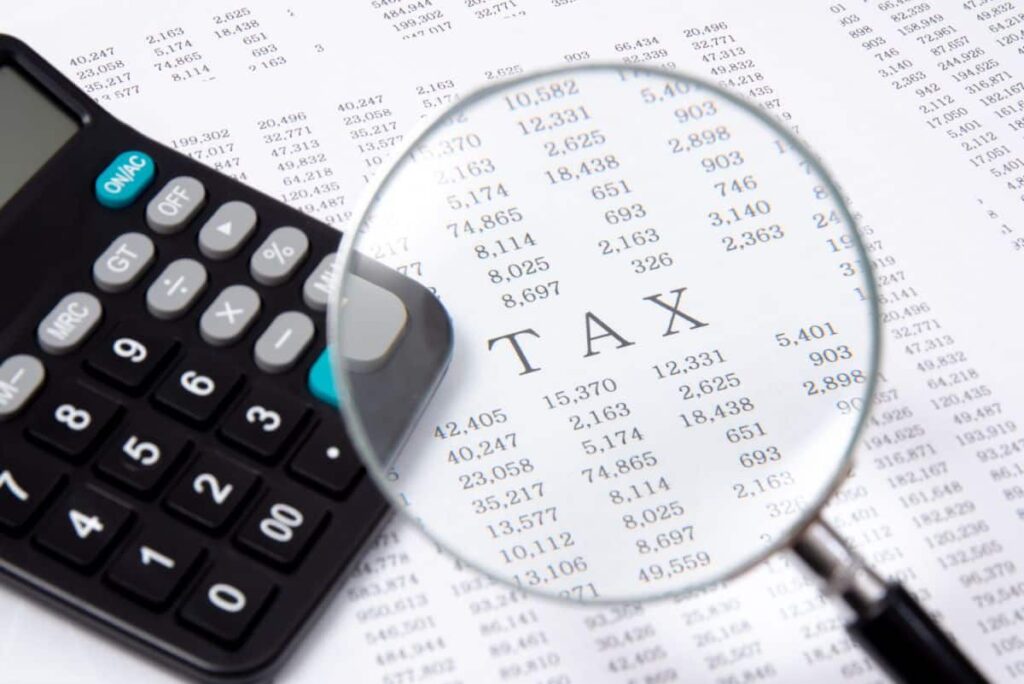SMSF Financial And Taxation Advice
A self-managed superannuation fund, also known as an SMSF, is an excellent method to manage your tax situation while also saving for retirement.
However, in order to ensure that you are making the most of all of the advantages that an SMSF has to offer, it is essential to seek the appropriate guidance regarding finance and taxation. This article will explain some of the important decisions that need to be made when establishing an SMSF and will provide recommendations on how to get the most out of your fund.
You might be thinking of establishing a self-managed super fund (SMSF) to take control of your finances if you are getting close to retirement or if you are already retired. Before establishing an SMSF, it is essential to consult with a financial professional and a tax specialist. SMSFs have the potential to provide investors with a variety of benefits. When establishing a self-managed super fund (SMSF), there are a number of important factors to take into mind.
The use of SMSFs, which stands for self-managed superannuation funds, as a method for saving money for retirement is becoming increasingly common in Australia. However, establishing and operating your SMSF can be difficult, which is why it is essential to seek out the financial and tax counsel of an experienced professional who is aware of what they are doing.
If you’re like the majority of people, you probably consider your self-managed super fund, also known as an SMSF (short for self-managed super fund), to be a complicated financial institution that is best handled by professionals. If you have access to the correct guidance and have a working knowledge of the subject matter, managing your SMSF is actually pretty simple.
In this post, we will provide you with a high-level review of self-managed super funds (SMSFs) as well as the taxation rules that govern them, in addition to some pointers on how to get started with an SMSF. Continue reading this article if you are interested in learning more about self-managed super funds (SMSFs) or if you are considering establishing one.
As a trustee of an Australian SMSF, one of your legal responsibilities is to make sure that the fund is managed in accordance with the law. This entails having a solid understanding of all applicable financial and taxation regulations and adhering to them.
The fulfillment of your obligations and the protection of your financial interests both require that you seek the guidance of a professional. This article is a blog post in which we discuss some of the most important financial and taxes factors for SMSFs and offer advice on how to remain compliant.
You have arrived at the right location if you are looking for information about SMSF financial and taxes guidance, respectively. This article will provide an outline of what self-managed superannuation fund (SMSF) advice comprises and explore some of the most important things to keep in mind when looking for assistance from a financial advisor.
Read on for some helpful insights into this intricate area of finance, whether you are just getting started with self-managed super funds (SMSFs) or are considering making changes to the way your investments are currently structured.
You undoubtedly believe that self-managed super funds, sometimes known as SMSFs, are only for the wealthy. Having said that, this isn’t always the case. Regardless of the amount of money you bring in each year, you should consider opening a self-managed super fund (SMSF) for a number of different reasons.
In this piece, we’re going to take a look at some of the most important financial and tax considerations that should be made when establishing an SMSF. Whether you are already familiar with SMSFs or are just beginning to investigate them, we hope that you will find the information that we have provided to be helpful!
If you are self-employed or run your own small business, you may be curious about the best approach to establish a savings plan for your retirement. This is a common question among people who are self-employed or own their own businesses. It is essential to seek the appropriate guidance before establishing a self-managed super fund (SMSF), which can be a good option for people who want greater flexibility and control over the planning for their retirement.
Until it is time to make a contribution to your retirement account, you generally don’t give your retirement account much thought. When you have a super fund that you manage yourself, however, there are a number of financial and tax factors that come into play (SMSF). Because of this, it is extremely important to seek the guidance of an SMSF professional who can assist you in getting the most out of your fund and avoiding any potential problems.
In recent years, self-managed superannuation funds (SMSFs) have emerged as a popular investing option; however, with this popularity comes an increased obligation to seek financial and taxes advice. When looking for assistance for your SMSF, there are a few crucial considerations you need to keep in mind, which I will describe in this blog post. In this section, we will also discuss some of the advantages of utilizing an SMSF as well as how to choose a financial advisor that is a good fit for you.
Let’s get started!
Are you thinking about starting your own self-managed superannuation fund (SMSF)?
Over one million people in Australia have taken charge of their retirement savings by establishing their own self-managed superannuation funds. This is a significant step toward financial independence (SMSF). The Self-Managed Super option is not a passing fad; the industry today has a combined asset value that is greater than $550 billion.
There are a lot of different reasons for this, but in our experience, control is the primary one. This includes control over investment decisions, control over asset allocation, control over costs, and control over assets.
A significant motivation for many Australians to establish a self-managed superannuation fund (SMSF) is the desire to make use of tax planning options that are unavailable through traditional retail funds.
What does SMSF stand for?
A “self-managed super fund” is a type of superannuation trust structure that is focused on giving benefits to its “members,” a collective group of people who are all recognized as trustees, following retirement. The phrase “self-managed super fund” is quite descriptive of what it is.
In order for a super fund to qualify as an SMSF, it can have no more than four members, those members cannot be compensated for their work as trustees, each member must serve in the capacity of a trustee, and no member can be an employee of the fund (unless they are linked to the fund).
SMSF Benefits
In practice, this means taking a “do-it-yourself” approach to managing one’s retirement assets and superannuation accounts. Despite this, many people in Australia are drawn to self-managed super funds (SMSFs) because they have a deeper understanding of the world of finance and, as a result, desire to have a larger degree of influence over the allocation of their retirement savings.
In addition to this, members are typically knowledgeable about various approaches to the accumulation of wealth. They think that they will be able to perform a better job overall, be more efficient, and generate bigger and more strategic returns than the current trustees of the fund. Trustees of SMSFs have access to a wider variety of investment options, which come with improved tax advantages. Trustees also benefit from greater flexibility. SMSFs offer particular death benefits for superannuation, which can be used in estate planning.
Those with considerable sums of capital to invest will find that self-managed super offers a multitude of perks. The most crucial benefit is that it puts you in charge of your money rather than a third-party fund manager. There are also opportunities for some clients to leverage an SMSF for both commercial and personal profit, and these opportunities exist.
For our medical and small-to-medium business clients, for instance, one of the tax-efficient options available to them is to own their consulting rooms or business premises through a self-managed superannuation fund (SMSF), and then pay themselves rent in effect.
SMSF Tax Basics

Self-managed super funds (SMSFs) may provide trustees with increased control over the taxation of their superannuation, although, as with any part of SMSFs, there are certain laws that must be followed.
1. The fundamentals of the tax system
When it comes to taxes, an SMSF is given the same consideration as retail, industry, and corporate funds. On the other hand, if you use an SMSF, you will have a higher degree of control over taxes problems.
Because SMSF trustees have authority and flexibility over your SMSF’s investment decisions, they are able to decide when an asset is sold, which may impact when any applicable taxes are paid. Trustees also have access to a range of investment options.
The standard tax rate that applies to profits made within a superannuation fund, including those made within an SMSF, is 15%. On the other hand, if the income is generated by assets that are solely supporting an income stream such as a pension, then there is no tax that needs to be paid on that income by the fund itself.
The assessable income of a conforming SMSF is outlined by the ATO, and it comprises the following:
- net capital gains (less total capital losses; and less than one-third of capital gains tax discounts for an asset owned for a year or more).
- employer and personal deductible contributions
- interest, dividends and rent
2. Non-arm’s length income
The ATO also provides definitions for activities and investments that are subject to a higher marginal tax rate than the 15 percent rate, such as income from relationships that are not arm’s length. Income from relationships that are not at “arm’s length” includes:
- resulting from a plan or investment in which the participants are not dealing with one another at a distance;
- where the amount is greater than the amount that the SMSF might have been anticipated to derive if those parties had dealt with each other at arm’s length; where the SMSF has a relationship with the related party that is not arm’s length;
- income obtained by an SMSF through its status as a beneficiary of a discretionary trust.
Other kinds of income received through SMSFs are taxed at varying rates, including the following sorts of revenue:
- contributions made to an SMSF in circumstances where the fund does not have the Tax File Number (TFN) of the member on file. Known as “no-TFN contributions,” these financial transactions are subject to the highest marginal tax rate.
3. Preventing tax fines by maintaining compliance with SMSF regulations
It is against the rules for you to lend money to yourself, to any other trustee, or to the family of other trustees. If a trustee of your SMSF or a relative borrows money from your fund, the Australian Taxation Office (ATO) has the authority to declare your fund non-compliant and impose hefty taxes and penalties.
4. Assets held in-house
The assets held in an SMSF cannot be used for the beneficiary’s own advantage. It is forbidden for you to purchase a vacation home for your own personal use. If your self-managed super fund (SMSF) buys the very same vacation home and then solely rents it out to people who are not linked to any of the fund’s beneficiaries, then doing so may be legal.
Your self-managed superannuation fund (SMSF) is only allowed to put up to five percent of its assets into “in-house assets,” which can include investments in your own companies. Because of the complexity of the rules regulating in-house assets, you should get counsel from an outside source.
5. The value of compliance
Because of the complexity of the Australian tax regulations pertaining to SMSFs, you should make sure that your accountant, financial planner, or financial adviser has the necessary training to offer you professional SMSF advice. If you are aware of the things that you can and cannot do, you will be equipped with the knowledge necessary to make the most of the control and flexibility that SMSFs may offer.
At The Tax Time, Should You Really Consider Hiring an SMSF Accountant?
1. Possibly not, especially if the investing strategy of your fund is quite simple
It is possible that it will not be beneficial for you to pay for the services of a traditional accountant if you have devised a very simple plan for your investments and if the assets that you have chosen are not particularly complicated. Even only five years ago, technology did not provide nearly as many options as it does today for the management of your funds.
The future of self-managed superannuation funds (SMSFs) will involve increased transparency of investments and the use of technological platforms that will make the administration of SMSFs much simpler. Here is where the company Selfmade comes in. We are able to assist you in maintaining your SMSF while also providing you with the expert financial guidance you require.
2. What are the responsibilities of an SMSF accountant?
Generally speaking, an SMSF accountant will focus on the activities that have already taken place in your SMSF. Typically, they will take the documentation of what you did in the previous fiscal year and form it into a coherent image for the purposes of tax preparation and record-keeping.
In addition to that, they are able to assist with certain administrative procedures and the lodging of tax returns. It is important to make sure that they have an Australian Financial Services License (AFSL), as costs might vary based on the degree of advice provided, but typically, you should expect to pay between $2,000 and $4,000 annually for their services. I’m assuming that this is money that you might put to better use elsewhere.
Instead of relying on traditional accountants, a growing number of trustees of SMSFs are turning to technology to handle the administration of their funds. Why? Accountants have been the go-to source for guidance on setting up and managing self-managed super funds (SMSFs) ever from the very beginning of self-managed super funds (SMSFs). However, despite the fact that this guidance has traditionally been highly restricted, accountants are now subject to even greater limitations as a result of statutory amendments that took effect on July 1, 2016.
The administration of your SMSF and filing your very first tax return might be challenging endeavours if this is your initial time managing an SMSF. There is a lot of paperwork that needs to be kept track of, which is preferably something that you manage throughout the year. The deadlines for completing your annual return can vary from year to year, depending on how old your fund is.
3. If you have a sophisticated SMSF, you could still want the services of a standard SMSF accountant.
An accountant might be the ideal choice if, for example, your fund makes investments in direct real estate or in securities that are not listed publicly. However, however, only a small number of SMSFs invest in these kind of things.
The Truth About These 3 SMSF Myths
A self-managed superannuation fund, also known as an SMSF, can be an excellent method to have control over your retirement by taking matters into your own hands and giving you the ability to manage your own investments. You are in complete control of your self-managed super fund (SMSF), in contrast to industrial or retail super funds, which employ fund managers.
Because you are self-managed, you are effectively responsible for all management choices, including those pertaining to investments and insurance. SMSFs, on the other hand, are subject to regulation by the Australian Taxation Office. This is due to the fact that managing an SMSF involves a significant amount of personal responsibility (ATO). As a direct consequence of this, self-managed super funds (SMSFs) have been the subject of intense scrutiny in recent years, and many industry experts have questioned their viability.
When deciding whether or not a self-managed superannuation fund (SMSF) is best for you, here are three common misconceptions regarding SMSFs:
Myth number one: In order to have an SMSF, you need to be wealthy.
Although this number is frequently brought up when discussing an SMSF, it should be understood that it is somewhat of an urban myth. When it comes to opening a self-managed fund, the Australian Securities and Investments Commission (ASIC) states that there is no obligatory minimum balance requirement.
In light of this, it is strongly suggested that you have a sizable beginning balance, somewhere in the neighborhood of two hundred thousand dollars. It is important to point out that this book was written for a specific purpose because the administration and compliance costs associated with administering an SMSF are not free. It might not be worth it for funds that have relatively little money in them.
According to data provided by the ATO for the 2014-2015 fiscal year, roughly a quarter of all SMSF funds had a balance that ranged from $200,000 to $500,000. Therefore, you should consider of it more as a recommendation than a required minimum amount; there is no hard and fast rule that determines whether or not an SMSF will be beneficial for you. Talk to an SMSF expert before drawing any hasty decisions so you can find out what makes the most sense for you.
Myth number two: Self-Managed Superannuation Funds Are Too Risky
Self-managed superannuation funds are managed by their trustees, in contrast to retail and industrial superannuation funds, which have fund managers who are normally responsible for making investment choices on behalf of the fund.
When it comes to your own finances, the decision-making process can be fraught with peril because of the weight of personal responsibility involved. However, just as with other types of investments, striking the right balance between risk and profit requires seeking the appropriate guidance and making informed decisions.
In order to effectively manage both your investments and your fund as a trustee of an SMSF, you will need to possess the necessary knowledge and abilities. The ATO imposes stringent regulations on SMSFs, and if you break any of these rules, you could face a variety of penalties and fines.
Always seek the counsel of professionals and make it a habit to frequently examine your investment strategy to ensure that it takes into account the diversification, liquidity, solvency, and insurance needs of the fund. Doing so will help you keep your risk exposure to a minimum.
Myth number three: SMSFs are an easy method to invest in real estate
Even while trustees of an SMSF have the option of adding an investment property to their portfolio, doing so is not nearly as straightforward as it may first appear. When compared to investing in property independently, purchasing real estate through a self-managed super fund presents greater challenges in terms of management and regulation.
According to the information presented in a recent article that we published, you, any other trustee of your SMSF, or anyone related to the trustees – not even your fourth cousin – are not permitted to reside in or rent out any property that was acquired using an SMSF. In addition, you are unable to transfer an existing property into an SMSF, even if the property was purchased at the current worth of the market.
When it comes to a self-managed superannuation fund (SMSF) and a residential property, the most important thing to remember is that any linked parties cannot benefit in any manner from the property.
Although it is allowed to secure financing in order to purchase a property with an SMSF, doing so is becoming increasingly difficult from a business perspective due to the fact that the major four banks and a number of second-tier lenders no longer lend money to self-managed super funds.
FAQs

1. Are accountants able to establish SMSFs?
Even if they don’t advise their customers to set up an SMSF or sell their interest in a superannuation product, accountants are nevertheless allowed to offer services related to the establishment of SMSFs. An accountant who specializes in SMSFs can only advise customers on compliance issues and lead clients through the process of establishing the fund.
2. Is it possible for me to submit my tax return for my SMSF?
At the moment, there is no direct link for SMSFs provided by the ATO; nevertheless, you are able to submit your annual tax return to the ATO either electronically or on paper. You are need to have software that is compatible with Standard Business Reporting’s electronic filing system in order to lodge electronically.
3. In what kinds of assets can I make investments using my SMSF?
If you manage your own super fund, in addition to the typical investments of shares, term deposits, managed funds, and property, you may have access to a wider variety of investment opportunities. You also have the opportunity to make use of additional investment vehicles, such as exchange-traded funds, mFunds, and warrants, when you use the Selfmade platform.
4. Why choose a self-managed super fund rather than a traditional retirement fund?
Both SMSFs and industry super funds have their positive and negative aspects to consider.
SMSFs offer additional flexibility and permit you to exercise direct management over your financial resources. Because of this, they might be appropriate for those who have a sizable amount of money and who have a solid grasp of the regulations governing finances and taxes.
On the other hand, industry super funds are typically more straightforward and charge fewer costs, in addition to providing the ability to promote your sector.
5. Would it be beneficial for me to use an SMSF?
If you choose to manage your own retirement savings, you will have complete discretion over how and where your money is invested, but, in comparison to using an industry super fund, you will be responsible for more monitoring and management tasks.
This is a significant choice that needs to be made, and it is one that needs to be taken thoughtfully, after having a talk with your family and seeking guidance from financial advisors.
6. I would like to add some additional funds to my existing superannuation account. Are there restrictions on how much can be contributed to a superannuation plan?
You are only allowed to make voluntary contributions of up to a certain amount of money to your super fund on a concessional basis. This limit is set by the government. This is due to the fact that there are caps on the amount of money that can be contributed to superannuation each year.
If you make contributions that are in excess of the restrictions, you will be required to pay additional taxes, and any excess concessional contributions will be counted toward the maximum for non-concessional contributions.
Contributions that are deemed to be eligible for a tax deduction are referred to as concessional contributions. These contributions can be made by employers as well as by self-employed individuals in the form of personal contributions.
The annual limit for concessional payments is currently set at $27,500, regardless of the contributor’s age.
In most circumstances, you will be required to pass a work test in order to be eligible to make contributions to your retirement fund if you are older than 67. To be eligible to make tax-deductible and nondeductible contributions to your superannuation during this fiscal year, you need to have worked for a minimum of 40 hours per week for a period of at least 30 consecutive days.
Donations made from money that has already been taxed are known as non-concessional contributions. When money is put into a retirement savings account, the contributions are not subject to taxation in any way. However, once earnings are in the fund, they are subject to taxation at the standard fund rates.
The maximum amount that can be contributed through non-concessional accounts is $110,000. As a consequence of this, under the “bring forward rule,” an amount equal to $330,000 may be donated within the predetermined time period of three years.
If you have a total balance in your superannuation account that is close to $1.6 million, the only years for which you are eligible to use the bring-forward rule are the number of years that would bring your balance to $1.6 million.
If you have already triggered the bring-forward rule and your account balance has reached $1.7 million, you will be unable to make any additional non-concessional contributions. This is the case even if you have not yet effectively used up the entirety of the bring-forward cap that has been triggered.
If you triggered the bring-forward rule before 2016/17 but did not contribute the entire $540,000, you will be limited to a transitional bring-forward cap. This cap will be in effect until 2017/18.
Even if you satisfy the requirements of the work test, you will not be able to take advantage of the “bring forward” provision if you are older than 65.
7. I have reached the age of retirement and am over sixty years old. When I reach retirement age, would I be able to get my pension tax-free?
When a person reaches the age of 60, they are exempt from paying tax on any superannuation income streams (pension or annuity payments) that are paid from a fund that is subject to taxation. A fund is considered to be taxed if the contributions that your employer made into your super fund on your behalf were subject to contributions tax and the tax was paid.
If the contributions were made through a salary sacrifice arrangement, contributions tax would have also been paid at the time. Most funds are taxable funds. Nevertheless, regardless of their age, individuals who are members of a tax-free super fund will still be required to pay tax on the income stream generated by their superannuation account.
No longer will a PAYG Payment summary be sent to taxpayers who are over the age of 60 (for the entirety of the financial year) and who are receiving a superannuation income stream from a taxed fund.
8. For what reason is it necessary for me to provide my superannuation fund with my tax filing number (TFN)?
Let’s say you don’t provide your superannuation fund with your tax file number (TFN). In that event, the fund will be subject to the obligation of making additional tax payments on any contributions made by your employer (including salary sacrifice amounts).
Your fund will not accept any personal contributions that you make and the government co-contribution that you may be entitled to cannot be put into your account if your TFN has not been recorded.


















